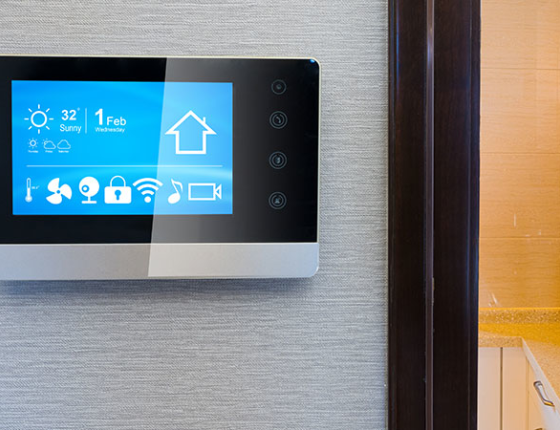What’s So Smart About a Smart Home?
We cover the use of various smart home technologies that help reduce energy use in your home.
With the advent of the Internet of Things (ability for the internet to connect to everyday objects), our homes are filling up with “smart” devices, providing new ways to get things done and manage our environment. Connected devices make our homes more convenient and usable. We can perform everyday actions and tasks with our fingertips using our smart phones or through voice commands with systems like Alexa (Amazon Echo), Siri (Apple HomeKit), or Google Home. Smart devices can be remotely operated or programed to operate on a schedule. Some can even sense our habits and operate accordingly.
How can smart homes help us save energy and money?
The chart below shows how we use energy in our homes. Some of the primary energy uses are heating and cooling (nearly 40 percent of our total energy use), lighting (about 7 percent), and miscellaneous plug loads (like computers, home entertainment systems, and other devices that we have plugged into the wall).
Heating and cooling
Smart thermostats allow us to heat and cool our houses more efficiently by automatically setting a lower temperature when we are out of the house or sleeping. A smart thermostat provides a simple way to manage the temperature of your home, often reducing your energy by 15–20 percent. Some smart thermostats (like the Nest and ecobee) are linked to the location of your smart phone, which allows them to adjust the temperature based on whether or not the house is occupied. If you are already using a programmable thermostat, installing a smart thermostat may not be cost effective.
For window air conditioners and fans, homeowners can purchase smart outlets. These inexpensive additions to a standard outlet allow you to turn on or off any devices plugged into them by using your smart phone. You can also put the smart outlets on a schedule. For example, you can keep your window unit off while you are at work, but set it to turn on during your return commute so that you will return to a cooled home.
Lighting
There are a number of smart options for lighting. Smart light bulbs communicate to hubs that allow you to control them with your smartphone or by voice. These are all energy efficient LED lights. Depending on the brand, you may be able to control brightness and color. Dimming your lights with a dimmer switch is another way to reduce your energy use.
Lights can also be controlled by smart light switches and smart outlets. These can also be programmed with a daily schedule. There are many other advantages of these smart outlets as well — for instance, the fact that they are connected to the Internet means that a power outage or time change will not disrupt the programmed schedule (a problem with past versions of technology, like timers). Additionally, they can be operated remotely and often have a voice control feature — that means no more running back upstairs to turn off the light!
Plug loads
Common household energy waste comes from phantom (or standby) loads. This is the energy that is used by devices (typically electronics) that draw power 24/7 as they wait to be turned on. Often such devices are operated by a remote, like televisions, cable boxes, and gaming consoles, among others. Plugging these devices into smart outlets can ensure that they are not wasting energy when not in use.
It is important to note that smart devices also contribute to phantom loads, since they are constantly on standby while waiting for direction. While the devices are designed to use as little energy as possible on standby, the number of smart devices and the savings you leverage from them will determine whether their wasted energy from phantom loads is worth it.
How much will it cost?
This table, maintained by the Northeast Energy Efficiency Partnership, lists many of the smart home devices on the market.
Next Steps
New types of smart devices are released each year, from smart coffee makers to smart refrigerators. Convenience and usability are the main attractions for these devices, but they may offer energy saving opportunities as well.
Many utilities have incentive programs and rebates for devices like smart thermostats because they reduce energy use. Some utility incentive programs employ your home’s smart thermostat to reduce air conditioning energy use during peak cooling times in the summer to prevent blackouts. Residents enrolled in these programs receive discounted rates and rebates. As smart devices provide more opportunities for energy efficiency, utilities are sure to provide more incentives and rebates.
Outside Resources

Questions about your home energy? Let's talk!
